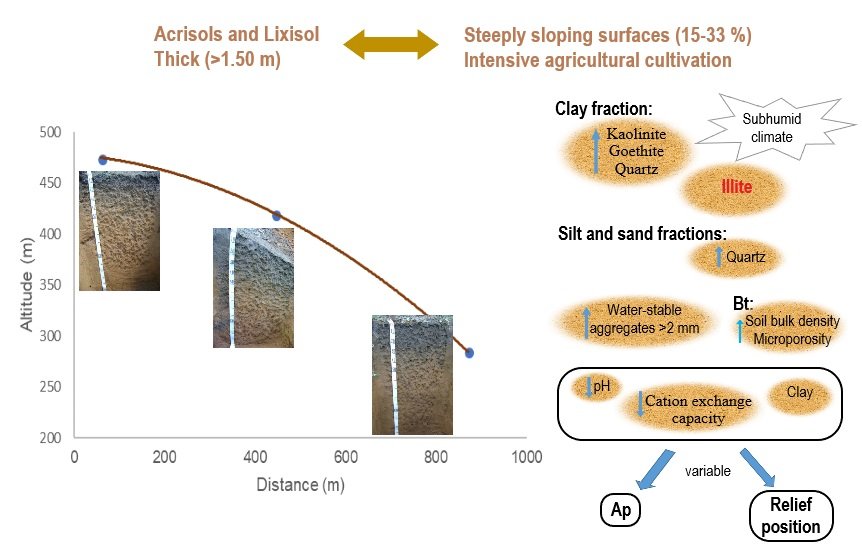Relief Position and Soil Properties under Continuous Banana Cropping in Subhumid Climate in Northeast Brazil
20/Aug/2019
ABSTRACT Sequences of thick and eroded soils in hills surfaces are cultivated with banana since the beginning of the last century in the Northeast of Pernambuco (PE), Brazil. Measurements of soil properties depending on soil slope under intensive agricultural cultivation are limited mostly as the pedogenetic approach. This study aimed to identify the dominant soil types, to evaluate morphological, physical, chemical, and mineralogical properties of soil profiles, and link them to the relief position under continuous banana cropping, in the […]
MINERAL RESERVES OF K DETERMINED BY DIFFERENT METHODS IN SUBTROPICAL ARGISSOLOS SOILS
01/Jul/2015
Integration of chemical extraction methods and X-ray diffraction can broaden understanding of K+ forms and reserves in soil fractions, and their potential release to plants. The aim of this study was to use chemical extraction methods to estimate mineral reserves of K+ in sand, silt, and clay from subtropical soils; to associate extraction mechanisms with the forms of K+ released; and to monitor the dynamic of K+ release in a kinetics study. The sand, silt, and clay fractions of the […]
Genesis of latosols and cambisols developed from pelitic rocks of the Bambui group, Minas Gerais state – Brazil
01/Aug/2010
The widespread occurrence of Cambisols (shallow, dense and silty) and of clayey and very clayey Latosols is typical of pelitic rocks of the pre-Cambrian Bambui Group landscape, but few studies are focused on the genesis and agricultural potential of these soils. Two areas were selected in Curvelo, state of Minas Gerais, for a detailed study of physical, chemical and mineralogical properties of these soils, to deepen the understanding of the pedogenesis of this area. Soils classified as Haplic Cambisols (Inceptisols), […]

